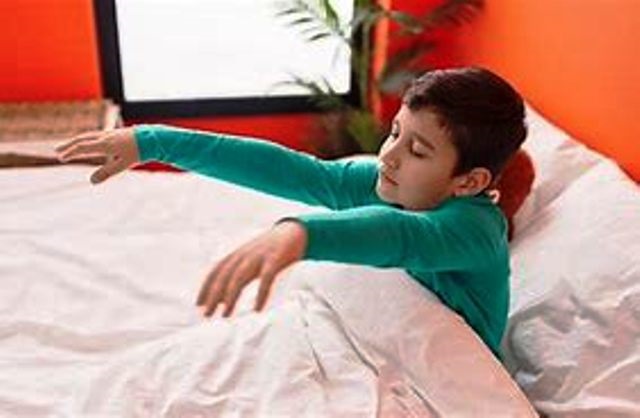Sleepwalking is a sleep disorder characterized by a state of deep sleep in which individuals get up and walk and move and may have no memory of this behaviour when they wake up in the early morning. Sleepwalking can lead to safety risks and daytime fatigue – The exact cause of sleepwalking is unknown, but it may be related to the development and regulation of the nervous system and needs to be properly managed and treated.
Causes:
Research source suggests that sleepwalking behaviour tends to occur during non-rapid eye movement, or “slow-wave,” sleep, in the first third of an individual’s sleep cycle. It is likely due to a disturbance in the way that the brain cycles between levels of sleep.
Researchers have found that people are more likely to sleepwalk if they have a family member who also sleepwalked at some point in their lives.
As well as genetics, factors that increase slow-wave sleep (such as prior sleep deprivation) and factors that increase arousal from sleep (such as stress, alcohol consumption, and other sleep disorders) may also increase the frequency of sleepwalking in susceptible individuals.
Experts also note some additional factors that have a role in causing sleepwalking. These include:
- obstructive sleep apnea
- lack of sleep
- Premenstrual syndrome
- travel
- stress
- certain medications, such as zolpidem
- alcohol
- fever
- migraine
- noise or light
- head injuries
- stroke
- brain swelling
Symptoms:
The key indication that someone is sleepwalking is that they are up and moving around despite not being awake.
Some other symptoms include:
- open eyes, often with a glassy look
- difficulty waking
- confusion
- talking or mumbling in their sleep
- a prompt return to sleep
- eating
It can be dangerous for a person to be moving around when they are not awake. Stairs and sharp objects are direct threats.
On rare occasions, people have also been known to drive cars, which is extremely dangerous, as it puts the person and others around them at risk of injury and death.
It is also common for people who walk or engage in other activities while sleeping to have no memory of what they did.
Treatment:
Treating sleepwalking depends on how old the person is.
Because sleepwalking in children is fairly common and often resolves on its own, the first treatment recommendation is often for adults to keep a close eye on any children who tend to walk in their sleep. Preventing injury is the most important part of management.
People have tried scheduled awakenings in children with some successful trusted sources. To try this:
- Note the time the child typically sleepwalks.
- Gently wake the child 15 minutes before this time.
- After a short, gentle interlude, help the child go back to sleep.
- Repeat this process nightly for a month to change their sleeping cycles.
Treatment for adults may begin by keeping a sleep diary and attending an overnight sleep study. This can help a healthcare professional identify what might be interfering with an individual’s sleep.
According to some experts, respiratory problems such as obstructive sleep apnea can play a role in sleepwalking. It may be the case that when treatment brings such breathing problems under control, the sleepwalking stops.
Hypnosis has also been a helpful trusted source for some people.
Healthcare professionals do not frequently prescribe medication for sleepwalking.
Creating a safe sleeping environment by, for example, locking windows and doors is very important for people who cannot control their sleepwalking by other means.
The first and most important step in preventing sleepwalking is for people to realize that they do walk in their sleep.
Taking action to manage this behaviour can involve:
- being careful to prevent sleep deprivation, especially when crossing time zones
- following a regular sleep schedule and making a point of going to bed and getting up at the same time each day
- if the sleepwalker is a child, make sure that babysitters and anyone who may care for the child know about their tendency to sleepwalk
- installing safety gates around stairs
- sleeping in lower bunks and on the ground floor, if possible
- locking windows and removing hazardous objects, such as glass vases, from the bedroom
- keeping car keys, weapons, and power tools locked up and out of reach of sleepwalkers
- checking with a healthcare professional to make sure that the person is not taking any medications that can trigger sleepwalking, since one study identified 29 drugs that do so
- managing stress with regular exercise, which a person should complete 5-6 hours before going to sleep

